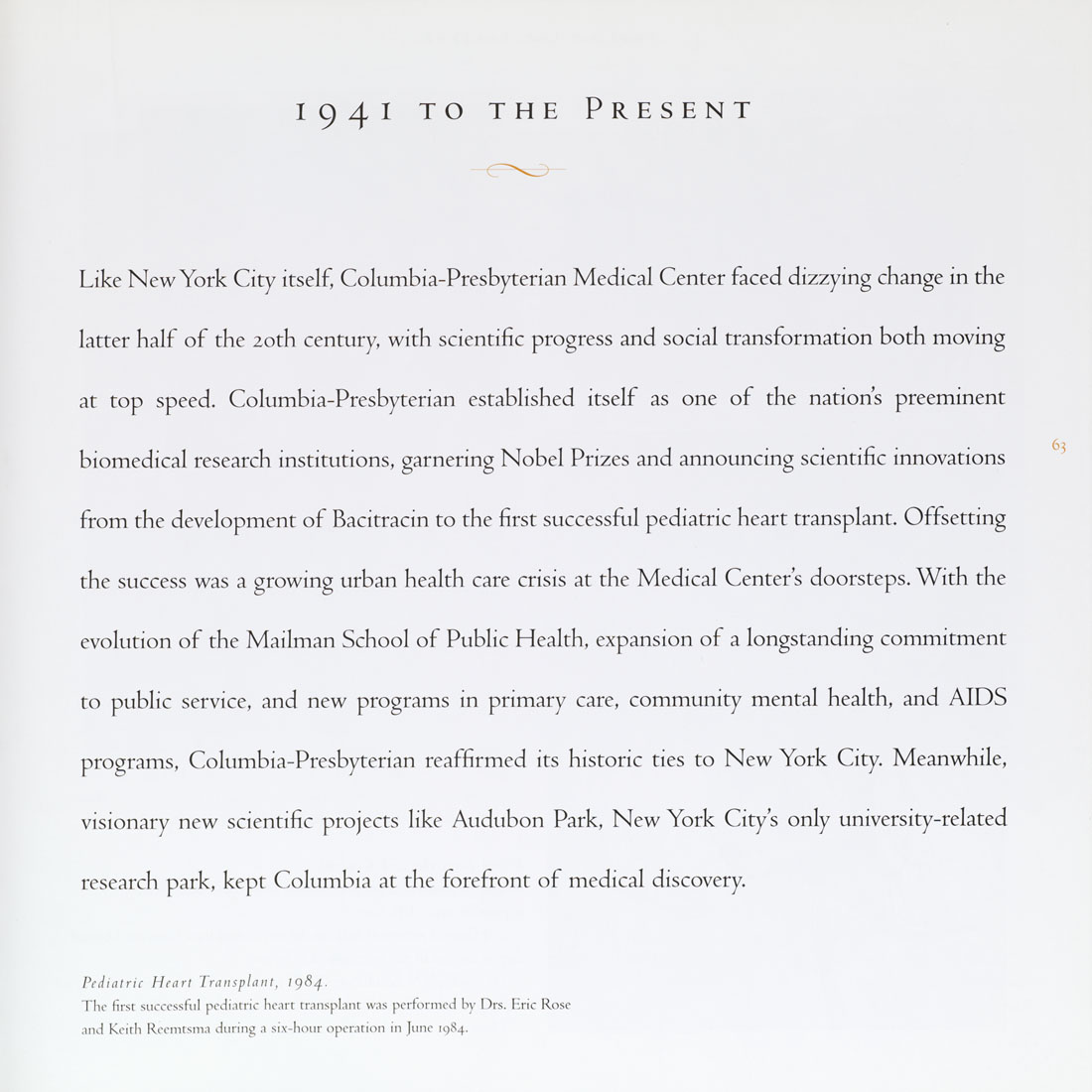194^ ^^ THE Present
Like New York City itself Columbia-Presbyterian Medical Center faced dizzying change in the
latter half of the 20th century, with scientific progress and social transformation both moving
at top speed. Columbia-Presbyterian established itself as one of the nations preeminent
biomedical research institutions, garnering Nobel Prizes and announcing scientific innovations
from the development of Bacitracin to the first successful pediatric heart transplant. Offsetting
the success was a growing urban health care crisis at the Medical Center's doorsteps. With the
evolution of the Mailman School of Public Health, expansion of a longstanding commitment
to public service, and new programs in primary care, community mental health, and AIDS
programs, Columbia-Presbyterian reaffirmed its historic ties to New York City. Meanwhile,
visionary new scientific projects like Audubon Park, New York City's only university-related
research park, kept Columbia at the forefront of medical discovery.
Pediatric Heart Transplant, igS^.
The first successful pediatric heart transplant was performed by Drs. Eric Rose
and Keitli Rccintsma durmg a six-hoiir operation in June 1984.
65
|








